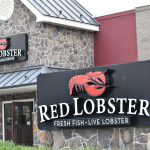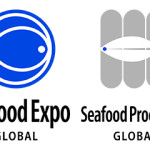A new free trade milestone for Southeast Asia could have a big impact on aquaculture output and in the region, making for more efficient flow of feed and investment into aquaculture. An EU-style single market coming into force this year for members of the Association of Southeast Asian Nations (ASEAN) makes for “an exciting and interesting time” in the region, says Lukas Manomaitis, a Bangkok-based seafood consultant. He foresees the ASEAN Economic Community (AEC) as a boon for leading southeast Asian feed companies like CP, Thai Union Feedmill and Japfa/Comfeed (STP) as well as Growbest who will be free to shift volumes of feed across borders in the region to support increased production.
This is important given the aquaculture industry is poised to grow quite dramatically in the Southeast Asian region overall. A recent report produced by the United States Soybean Export Council (USSEC) found a need for 2.2-3.5 million metric tons more of seafood will be needed by 2018. “There may be some limited areas that can expand wild fisheries, but highly unlikely enough to meet the demand forecasted,” said Manomaitis.
Manomaitis thinks free-market status will also have an important impact on the national champion companies who will be forced to compete not only with other local companies but local companies that have expanded overseas and external companies that will have access to the region because of the AEC.
“This will also impact seafood production and sales as competition will become more regional than national,” said Manomaitis, who also represents USSEC in the region. “When I first started in this area we very rarely saw aquafeeds crossing borders regionally. Now this is a very common occurrence. Aquafeed mills, which once were very much a national concern, are actively seeking to expand sales across borders.”
The more protective countries in the region will be forced to adjust. Manomaitis believes the Philippines may “feel a lot of pain” as feeds and seafood products that can be produced more inexpensively outside the Philippines start to be imported more regularly. The USSEC report found that in general the Philippines had higher prices for feeds and production than other main Southeast Asian aquaculture producing nations.
It remains to be seen which nations would be best placed to capitalize on the free market, but Manomaitis pointed to several factors worth watching as the free market deal kicks in. “Thailand has an established export industry that knows how to leverage. There are opportunities elsewhere (such as Myanmar), but the overall picture is still very complicated due to national laws and regulations.”
As of now the Philippines’ constitution prohibits foreign ownership of an integrated (i.e. feed, ponds) aquaculture operation as certain sectors are for Philippine nationals only. Malaysia on the other hand has some preferential structures in place to encourage investment in aquaculture.
Some of the new aquaculture output in ASEAN will be from new ponds, said Manomaitis “while some will be ponds that have more intensive approaches which allow more efficient harvest, feeding and waste collection. However, we believe that there will be a large move in the near future to more offshore marine cage production.” He noted that “corrections” needed in the value chain include brood stock genetics, as well as improvements to feed and hatcheries as well as “zoning and licensing” to allow the expansion in output to happen more efficiently. Manomaitis said he’s been looking at Turkey as an example of how the nations and region of SEA can move to industrial offshore marine cage aquaculture.
New output in Southeast Asia will also be of interest to China whose integrated aquaculture/feed companies have been keen to grow sales and production in Southeast Asia. Jim Zhang, China representative for the United States Soybean Export Council, said his conversations with government officials and industry people makes him feel shrimp output in 2014 was “not that bad” though final data won’t be available until June of this year when the China Ministry of Agriculture publishes its annual yearbook on China’s aquaculture output.
Zhang is also bullish about China’s tilapia production in 2014, which he judges to be on the up judging by rising feed consumption. Soy utilization has soared from almost zero in the early 1990’s to total usage of around 8 million MT for aquaculture alone in 2014. This is driven by big Chinese feed firms like Haid or Tongwei who are seeking to compete nationally and regionally by lowering feed costs through alternative inputs like soy and other plant protein ingredients rather than fish meal.






